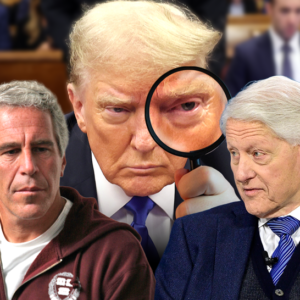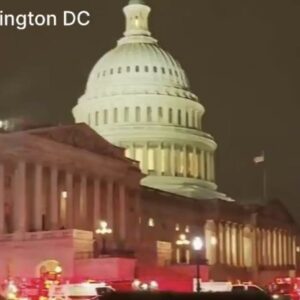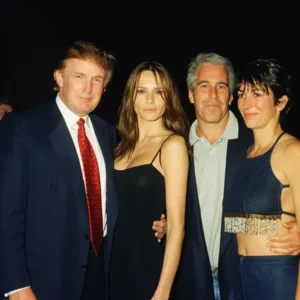Chris Wray, former FBI Director, is at the center of intense scrutiny amidst allegations regarding his role in the January 6th protests. A recent AI-generated image depicting Wray in a prison cell alongside January 6th defendant Ryan Samsel highlights stark contrasts in their treatment. Samsel has been characterized by severe mistreatment while detained, spending nearly six months in a cramped, windowless cell, enduring cruel conditions such as unsanitary food and violence at the hands of prison staff. This situation raises profound questions regarding justice and accountability, especially in light of claims that Wray exploited the January 6th incident for political gain.
CONTINUE READING
The chilling account of Samsel’s time in prison paints a harrowing picture. He reportedly suffered physical injuries that included crushed bones and loss of eyesight, endured untreated medical conditions, and faced the constant threat of life-altering blood clots. This brutal treatment has led many to consider Wray complicit in a broader scheme designed to entrap individuals associated with the January 6th events. Allegations suggest that Wray knew these events were manipulated for political leverage against former President Trump, and this raises a critical inquiry: If these actions do not constitute obstruction of justice under Section 1512, what does?
In recent discussions, those close to the situation have expressed concerns over the apparent inaction from figures like Pam Bondi, who, despite having seen the troubling images and heard Samsel’s plight, has been accused of dismissing the accusations of cruelty faced by January 6th defendants. Her comments imply a lack of awareness or acknowledgment of the grave injustices occurring under the FBI’s watch. This indifference contributes to a growing sentiment that the system is failing to protect its citizens
Ryan Samsel, before his incarceration, was a recognized activist, reportedly raising nearly a million dollars for others in need of medical care. Today, however, he struggles not only with physical ailments stemming from his treatment but also with societal stigmatization as a result of his association with the January 6th protests. His transition from able-bodied to weighing only 140 pounds represents a tragic downfall, fueled by a narrative often distorted by mainstream media. Despite his previous contributions to society, the prevailing narrative now seems to overshadow his past, painting him merely as a criminal rather than the man dedicated to helping those in need.
The discussion has further evolved to address why influential figures feel compelled to align themselves with agendas that obstruct justice. There are calls for leaders like Bondi to step up and adhere to the principles of courage and accountability. Many believe that these individuals have a responsibility to combat the narrative that seeks to vilify those who dared to challenge the status quo. In light of information revealing that Wray allegedly directed agents to track and hunt down people affiliated with the protests, the urgency for justice grows clearer.
There’s also discontent directed at the perceived failure of the legal system to assist Samsel, especially as reports indicate health care has been denied to him post-incarceration while others receive funding and support without question. This inconsistency is particularly striking in a climate where the government prioritizes assistance for certain groups over its citizens who have suffered. The disparity highlights a troubling trend where the rights of American citizens are sidelined in favor of other political agendas.
As the debate continues over whether figures like Wray will be held accountable, the situation underscores the need for a deeper examination of justice within the current system. The cries for justice from January 6th defendants echo a fundamental desire to right the wrongs inflicted by those in positions of power. With influential institutions seemingly turning a blind eye, it begs the ultimate question—will the voices of those wronged finally be heard? As people rally behind Samsel and others like him, the movement for accountability grows stronger, invoking memories of the hardships faced in the name of justice.
In an era marked by political strife and ethical scandals, the narrative surrounding Wray and his decisions during those tumultuous days remains a lightning rod for dissent and calls for fairness. The American public is beginning to recognize the patterns of injustice that have unfolded and is demanding change. The ramifications of January 6th will likely reverberate far into the future, but as history has shown, the pursuit of truth and justice has the power to reshape destinies. The spotlight is on Bondi and her perceived inaction, leaving many to wonder if those tasked with upholding the law will step forward or continue to falter in their duties. The next moves in this unfolding drama may very well determine the course of American justice in the coming years.





